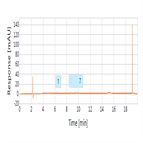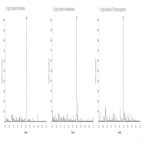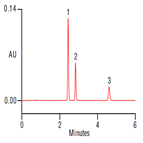Find methods for your needs
Refine by Feature
Displaying 1-5 of 13 results for Tag: Steroid Hormone
Quantitative Comparison of Hormones in Drinking Water Between MS/MS and Orbitrap Technology
Instrument Type: LCMSMSWe present a a liquid chromatography – high-resolution, accurate mass (LC-HRAM) methodology using Orbitrap technology as a sensitive, accurate, and reliable alternative to the use of triple quadrupole mass spectrometers in the quantification of hormones in drinking water according to EPA guidelines. By using different scanning modes within the Q Exactive MS, quantitation on precursor ions and identification of fragments ions are possible. These scanning modes can possibly be used for compliance monitoring in place of a triple quadrupole MS.
TN148: Automated Extraction and Determination of Human Hormones in Drinking Water Using Solid-Phase Extraction and HPLC with UV Detection
Instrument Type: HPLCThis Technical Note describes the use of high-surface-area solid phase extraction (SPE) to extract seven human hormones from drinking water using the Dionex AutoTrace 280 SPE instrument. Extracts were subsequently quantified using high-performance liquid chromatography (HPLC) to determine the recovery.
Fast and reliable method for the analysis of testosterone, androstenedione, and 17-hydroxy progesterone from human plasma
Instrument Type: LCMSMSTo describe an accurate and precise high-throughput analytical technique for the analysis of testosterone, androstenedione, and 17-hydroxy progesterone utilizing micro-scale solid phase extraction (SPE), followed by liquid chromatography coupled with triple quadrupole mass spectrometry (LC-MS/MS). For research use only. Not for use in diagnostic procedures.
Fast analysis of hydrocortisone in skin ointment
Instrument Type: HPLCThe Thermo Scientific HPLC system is applied for the analysis of hydrocortisone in skin ointment. The separation is performed on a Thermo Scientific Acclaim 120 C8 column, with UV detection at 245 nm.
Simple gradient method for the separation of estrogens and progesterones
Instrument Type: HPLCThe Thermo Scientific UltiMate 3000 RSLC system is applied for the analysis of strogens and progesterones. The separation is performed using a Thermo Scientific Acclaim Phenyl-1 column, with UV detection at 220 and 240 nm. for Research Use Only. Not for use in diagnostic procedures.





